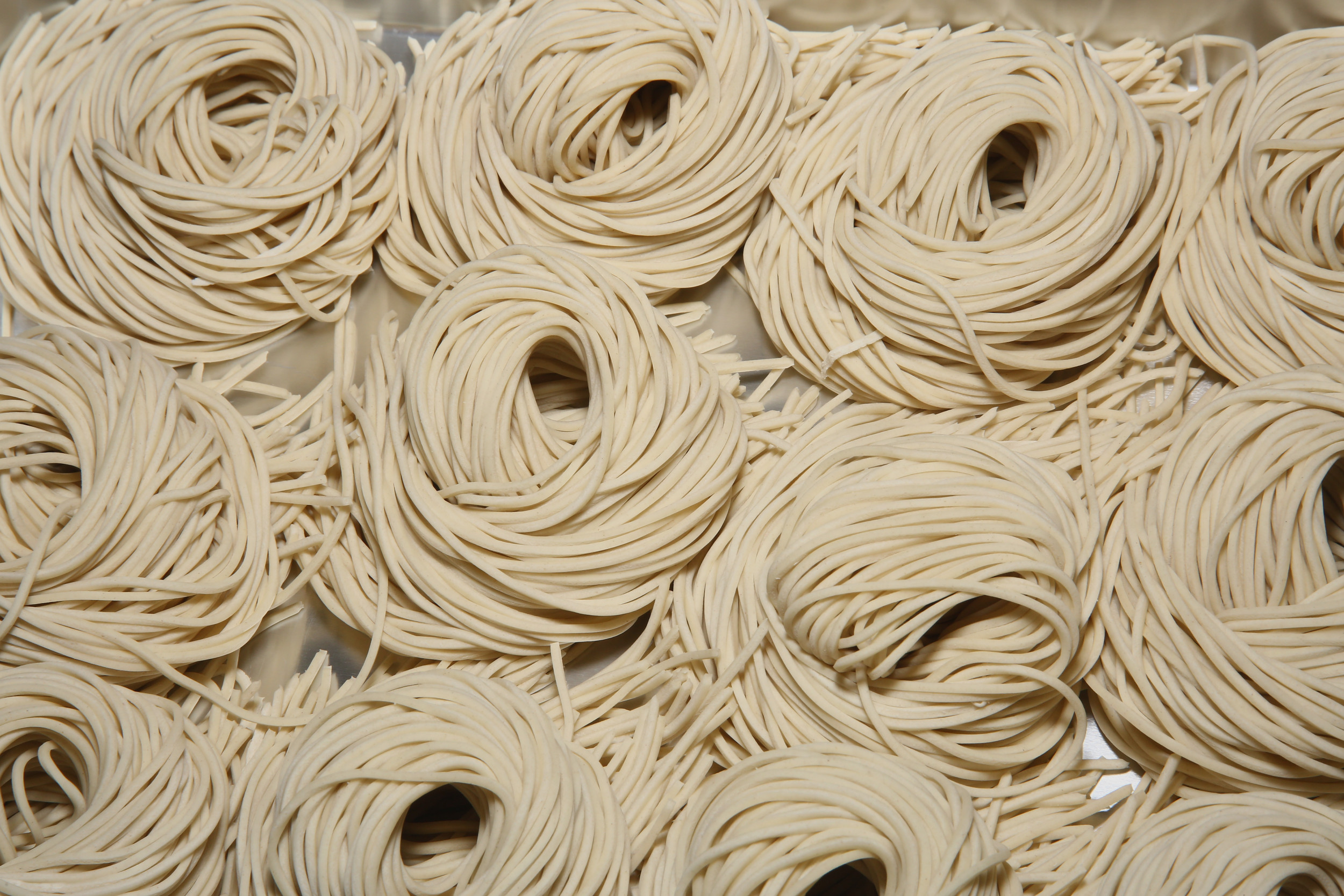Listeria Ramen: Understanding The Risks And Safety Measures
The rising popularity of ramen has captured the hearts and taste buds of food enthusiasts worldwide. However, alongside its delicious flavors, there lies a potential health risk associated with one of its ingredients: listeria. Listeria ramen is a topic that has gained attention due to the potential contamination of this beloved dish. In this article, we will delve into what listeria is, how it can affect ramen, and the necessary precautions to ensure food safety.
Ramen, a traditional Japanese noodle soup, can be made with various ingredients, including meats, vegetables, and broths. Unfortunately, if not prepared or stored correctly, these ingredients can become contaminated with listeria monocytogenes, a bacterium that can cause serious illness. Understanding the implications of listeria in ramen is crucial, especially for vulnerable populations like pregnant women, the elderly, and individuals with weakened immune systems.
In this comprehensive guide, we will explore the nature of listeria, its sources, and the importance of maintaining food safety standards when preparing ramen. We will also provide insights into safe cooking practices, symptoms of listeriosis, and what to do if you suspect contamination. By the end of this article, you will be equipped with the knowledge to enjoy your ramen safely.
- Why Filmyfly Xyz 2025 Is The Ultimate Hub For Movie Enthusiasts
- Sone 385 Hikaru Nagis Rise A Captivating Journey Through Passion And Dedication
Table of Contents
- What is Listeria?
- Sources of Listeria in Food
- Listeria and Ramen: A Dangerous Combination
- Symptoms and Risks of Listeriosis
- Safe Food Handling Practices
- Cooking Ramen Safely
- What to Do If Exposed to Listeria
- Conclusion
What is Listeria?
Listeria monocytogenes is a pathogenic bacterium that can cause listeriosis, an infection that primarily affects pregnant women, newborns, the elderly, and individuals with weakened immune systems. It is one of the few bacteria that can grow in refrigerated temperatures, making it a significant concern for food safety.
Key characteristics of Listeria include:
- It is commonly found in soil, water, and animal feces.
- Foods most often associated with listeria include deli meats, unpasteurized dairy products, and ready-to-eat foods.
- It can survive and multiply in a wide range of temperatures, including those found in refrigerators.
Sources of Listeria in Food
Understanding the sources of listeria is essential for preventing contamination. Here are some common sources:
- Dana Perinos First Husband All About Peter Mcmahon
- Ullu Web Series Vegamovies A Comprehensive Guide To Streaming And Downloading
- Deli Meats: Cold cuts and hot dogs can be contaminated during processing or handling.
- Unpasteurized Dairy Products: Soft cheeses made from unpasteurized milk are particularly risky.
- Raw Vegetables: Contamination can occur from soil or water used to grow produce.
- Ready-to-Eat Foods: Foods that are not cooked before consumption can harbor listeria if not handled properly.
Listeria and Ramen: A Dangerous Combination
Ramen can be at risk of listeria contamination through various ingredients, including broth, meat, and toppings. Here’s how:
Broth Contamination
If the broth is made from contaminated ingredients or not heated to the right temperature, listeria can survive and thrive.
Meat and Toppings
Meats such as pork or chicken used in ramen can be vectors for listeria if they are not cooked properly or if they come from contaminated sources.
Symptoms and Risks of Listeriosis
Listeriosis can manifest as flu-like symptoms and may lead to severe complications. Common symptoms include:
- Fever and chills
- Muscle aches
- Nausea or diarrhea
- Headaches and stiff neck
For pregnant women, listeriosis can lead to severe outcomes such as miscarriage, premature birth, or severe illness in newborns. It is crucial to seek medical attention if you suspect listeriosis, especially if you belong to a high-risk group.
Safe Food Handling Practices
To minimize the risk of listeria contamination in ramen, follow these safe food handling practices:
- Wash hands, utensils, and surfaces thoroughly before preparing food.
- Separate raw meats from other ingredients to avoid cross-contamination.
- Cook food to safe temperatures; use a food thermometer to ensure meats reach the recommended internal temperature.
- Store leftovers promptly and refrigerate them within two hours of cooking.
Cooking Ramen Safely
When cooking ramen, it is essential to follow safety guidelines to ensure that your meal is safe to eat. Here are some tips:
- Use fresh ingredients and avoid pre-packaged items that may have been stored improperly.
- Boil the broth to a rolling boil before adding noodles and other ingredients.
- Ensure that all meats are cooked thoroughly, reaching an internal temperature of at least 165°F (75°C).
What to Do If Exposed to Listeria
If you suspect that you have been exposed to listeria, it is essential to take action:
- Monitor for symptoms of listeriosis.
- Seek medical attention if you experience flu-like symptoms, especially if you are pregnant, elderly, or immunocompromised.
- Report any suspected foodborne illness to your local health department.
Conclusion
In conclusion, while ramen is a delicious and popular dish, it is essential to be aware of the potential risks associated with listeria contamination. By understanding what listeria is, its sources, and the proper food handling and cooking practices, you can enjoy your ramen safely. Remember to stay informed and take necessary precautions to protect yourself and your loved ones from foodborne illnesses.
We encourage you to share your thoughts and experiences in the comments below. If you found this article helpful, please share it with your friends and family. For more information on food safety and delicious recipes, feel free to explore our other articles!
Thank you for reading, and we hope to see you back on our site for more insightful content!



Detail Author:
- Name : Ms. Jermaine Dietrich Sr.
- Username : alesch
- Email : tremblay.rhoda@gulgowski.com
- Birthdate : 2005-02-03
- Address : 751 Weissnat Points Suite 757 Lake Pansyshire, TX 03048-7178
- Phone : 682.496.4643
- Company : Kutch-Ritchie
- Job : Traffic Technician
- Bio : Enim aut voluptatum omnis saepe necessitatibus. Excepturi odio corrupti dignissimos consequatur aut. Praesentium vel nemo perferendis dolores natus.
Socials
facebook:
- url : https://facebook.com/halvorson1978
- username : halvorson1978
- bio : Non ut ea omnis tenetur. Velit ut dolorem quibusdam perferendis saepe.
- followers : 1377
- following : 1565
linkedin:
- url : https://linkedin.com/in/greta.halvorson
- username : greta.halvorson
- bio : Quam qui molestiae exercitationem iste.
- followers : 3960
- following : 215
twitter:
- url : https://twitter.com/halvorsong
- username : halvorsong
- bio : Laudantium laudantium eaque hic consectetur repudiandae omnis sint. Maiores totam officia delectus et dicta asperiores. Est accusantium dignissimos delectus.
- followers : 5851
- following : 320
tiktok:
- url : https://tiktok.com/@ghalvorson
- username : ghalvorson
- bio : Odio dolores quis tenetur qui unde veritatis.
- followers : 4607
- following : 1424